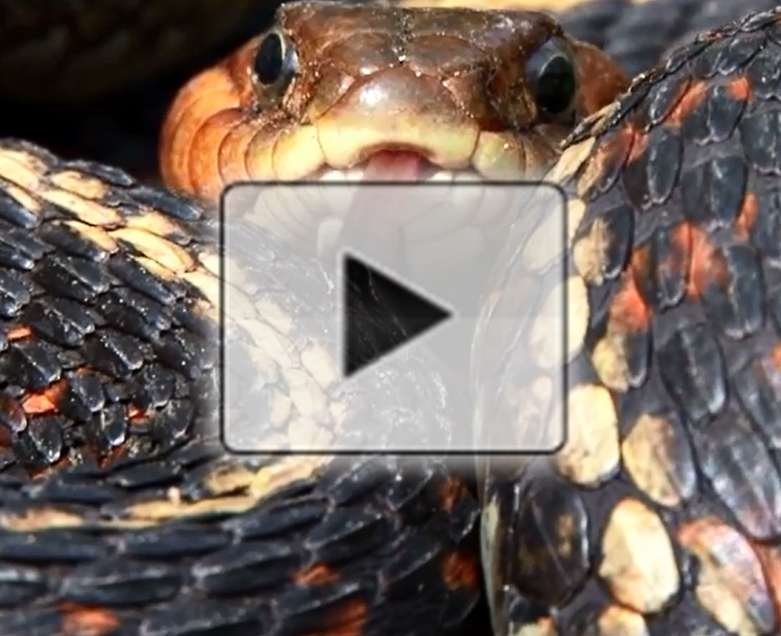Water-repellent material sheds like a snake when damaged

Imagine a raincoat that heals a scratch by shedding the part of the outer layer that's damaged. To create such a material, scientists have turned to nature for inspiration. They report in ACS' journal Langmuir a water-repellant material that molts like a snake's skin when damaged to reveal another hydrophobic layer beneath it.
Lotus leaves, water striders and other superhydrophobic examples from nature have inspired scientists to copy their water-repelling architecture to develop new materials. Such materials are often made by coating a substrate with nanostructures, which can be shored up by adding microstructures to the mix. Superhydrophobic surfaces could be useful in a range of applications including rain gear, medical instruments and self-cleaning car windows. But most of the prototypes so far haven't been strong enough to stand up to damage by sharp objects. To address this shortcoming, Jürgen Rühe and colleagues again found a potential solution in nature—in snake and lizard skins.
The researchers stacked three layers to create their material: a water-repellant film made with poly-1H,1H,2H,2H-perfluorodecyl acrylate (PFA) "nanograss" on the top, a water-soluble polymer in the middle and a superhydrophobic silicon nanograss film on the bottom. Nanograss consists of tiny needle-like projections sticking straight up. The team scratched the coating and submerged the material in water, which then seeped into the cut and dissolved the polymer. The top layer then peeled off like molted skin and floated away, exposing the bottom, water-repellant film. Although further work is needed to strengthen the top coating so that a scratch won't be able to penetrate all three layers, the researchers say it offers a new approach to creating self-cleaning and water-repellant materials.
More information: Roland Hönes et al. Molting Materials: Restoring Superhydrophobicity after Severe Damage via Snakeskin-like Shedding, Langmuir (2017).
Abstract
The nanostructures that are required to generate superhydrophobic surfaces are always sensitive to shear and are easily damaged, especially by scratching with sharp objects. As a result of this destruction, the water repellency will be lost. We introduce a novel approach to restoring the original surface properties after mechanical damage. In this approach, the damaged layer is shed like the skin of a snake. This is demonstrated with a three-layer stack as a proof-of-principle system: when the original, superhydrophobic surface layer is damaged, this leads to the dissolution of a sacrificial layer below it. Thus, the damaged layer is shed, a new unscathed surface is uncovered, and superhydrophobicity can easily be restored after a short washing.
Journal information: Langmuir
Provided by American Chemical Society





















